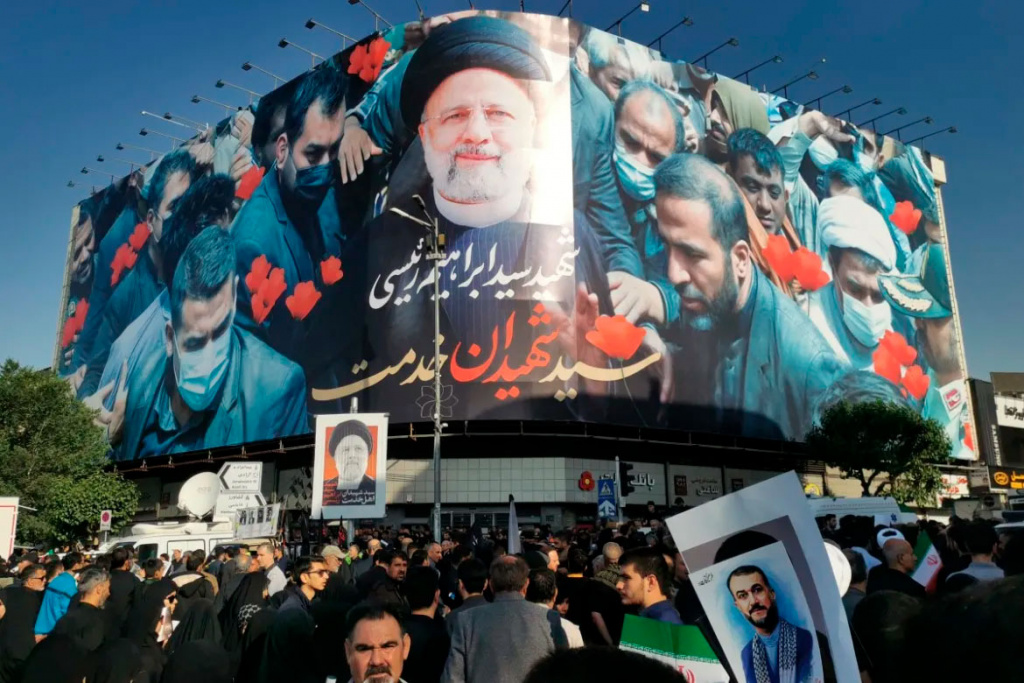News Conflict and the Iranian President's Plane
In
Log in if you are already registered
On May 19th, news of a helicopter crash involving Iranian President Ebrahim Raisi, his Foreign Minister, and other senior officials sent shockwaves around the world. The incident, which occurred while the President was returning from a ceremony on the border with Azerbaijan, quickly became a source of conflicting narratives.
Initially, Iranian media reported the deaths of all on board. This was followed by the release of photos and videos showing the wreckage of the helicopter in a mountainous area, confirming the seriousness of the crash. However, confusion arose when conflicting reports emerged from unofficial and even some official sources, with some claiming that Raisi and others had survived.

AFP
The cause of the crash remains unclear. Some reports attributed it to bad weather, while others suggested a technical malfunction or even foul play. Statements from Iranian officials, instead of clarifying the situation, only added to the ambiguity. Some confirmed the initial reports, while others did not deny the possibility of survivors or a planned incident. This lack of clear information fueled speculation about the future of Iran and the already volatile Middle East.
The conflicting information likely stems from several factors. The diverse sources — official Iranian media, international news agencies, and social media — all have their own perspectives and agendas. Their access to information may also be limited, especially in the immediate aftermath of the crash. The rugged terrain of the crash site further hampered initial information gathering, and bad weather conditions delayed search and investigation efforts. No official conclusions regarding the cause of the crash have been released yet, and new information could emerge as the investigation progresses.
There is also the possibility that some of the conflicting information is deliberately misleading, with certain parties using the incident for their own purposes. The lack of transparency in the early stages undoubtedly contributed to the spread of rumors.
In the first hours after the crash, media reports were constantly changing. Initial reports claimed Raisi had survived, only to be contradicted by reports of his death. This lack of a clear official statement regarding a head of state created significant confusion.
Inconsistencies were not limited to external sources. Iranian officials themselves provided contradictory information. Interior Minister Ahmed Vahidi initially reported an emergency landing due to bad weather, with Iranian media stating the President had continued by land. However, this was contradicted by state television's announcement of finding the wreckage, which was later denied by the Iranian Red Crescent. Similarly, reports of search and rescue teams being close to the crash site were later proven inaccurate.
The rise of social media and the ease of sharing information have significantly impacted how events are covered in the "new media era." This makes it increasingly difficult for media outlets to verify the accuracy of information circulating online, which can lead to the spread of misinformation.
Predicting Iran's future path after Raisi's death is challenging due to the uncertain circumstances. The country may continue its current internal and foreign policies under Vice President Mohammad Mokhber or another elected successor, who might attempt to improve relations with the West and strengthen the economy. However, it is also possible that extremists will exploit this situation to gain more power. The presence of the Supreme Leader makes it unlikely that there will be a complete power vacuum.
The Iranian president's helicopter crash is a significant historical event with potential repercussions for the country's future. While it is too early to say definitively whether Iran will move towards openness or greater extremism, this incident undoubtedly represents a major turning point.




